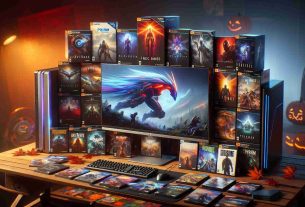April’s unprecedented financial boost to blockchain gaming has set a new benchmark for the subsector within the Web3 industry. A report in partnership with the Blockchain Gaming Alliance highlighted an impressive $988 million investment inflow in April, surpassing the entire investment of the previous quarter and marking a historical monthly peak since January 2021. Despite a slow start to the year, blockchain gaming’s April figures alone outshined the combined $287 million from the first three months of 2023.
The considerable investments were accompanied by an increase in daily unique active wallets engaging with blockchain games, with nearly 3 million users contributing to 28% of the month’s total decentralized application (dApp) interactions.
Roman Levi, Playnance’s Chief Technical Officer, emphasized the sector’s growing influence, noting the powerful allure of true digital ownership within blockchain games. This feature, allowing players to possess and monetize their in-game assets across different platforms, is a significant factor in drawing investors. Additionally, play-to-earn models and financial gaming elements, such as liquidity pools and staking, offer engaging experiences with the possibility of earning real-world value, which further boosts investor interest.
Addressing game financing (GameFi), Levi pointed out its potential to thrive as a leading aspect of Web3, merging captivating gameplay with decentralized finance’s economic incentives. He underlined that blending the immersive elements of gaming with economic benefits encourages broader player and developer participation, ultimately fostering community trust and furthering technological innovation.
Despite the momentum, traditional gaming giants remain hesitant about integrating blockchain technology. According to Levi, already-established developers will need convincing through seamless user experiences and interoperability solutions.
At Playnance, their platform PlayBlock harnesses innovative solutions that aim to ease this transition by providing comprehensive tools and infrastructure to support development in blockchain gaming, ensuring authentic property ownership, enhancing the user experience, and broadening economic opportunities for players.
Levi’s forecasts underline a breakthrough for GameFi, propelled by substantial investment and the integration of state-of-the-art technology, poised to captivate and cater to millions of global gamers.
Important Questions and Answers:
1. What has led to the surge in investments in blockchain gaming?
The surge can be attributed to the emerging concept of true digital ownership that blockchain gaming offers. Players can possess and monetize in-game assets across various platforms, which enhances user engagement. Additionally, the play-to-earn model, which allows players to earn real-world value through gameplay, appeals to both players and investors.
2. What are the main challenges facing blockchain gaming?
Main challenges include scalability, as blockchain networks need to handle high volumes of transactions without compromising speed or increasing costs. Interoperability is another concern, with the need for games to operate across multiple blockchain platforms. There’s also skepticism from traditional gaming companies and players regarding the complexity and benefits of blockchain technology.
3. What controversies are associated with blockchain gaming?
Critiques often point out the speculative nature of play-to-earn games and the risk of creating unsustainable economies. There’s also criticism regarding the environmental impact of some blockchain technologies, specifically those relying on energy-intensive proof-of-work consensus mechanisms.
Advantages:
– True Digital Ownership: Blockchain technology provides gamers with provable ownership of their in-game assets, potentially creating new economic opportunities.
– Monetization Opportunities: Players can earn monetary value through play-to-earn models, creating a new type of gaming economy.
– Innovation: The investments can drive innovation within the gaming industry, introducing new genres and gameplay experiences.
Disadvantages:
– Market Volatility: Cryptocurrency’s inherent volatility can impact the value of in-game assets and rewards.
– Regulatory Uncertainty: Blockchain gaming operates in a complex legal and regulatory environment, which could pose challenges for developers and players.
– Technological Barriers: Blockchain technology can be difficult for both players and traditional gaming companies to understand and adopt.
For further information on blockchain and its applications, refer to the following official domains (make sure URLs are valid):
– Ethereum
– Binance
– Blockchain.com
– Blockchain Game Alliance



